#jcentral
Text
Mizuhiki-zaiku no yasashii mochīfu
New item:

Shelf: 754.9 HAR
Mizuhiki-zaiku no yasashii mochīfu.
by Haruri.
Tōkyō : Butikkusha, 2022.
ISBN: 9784834782622
80 pages : colour illustrations ; 21 x 21 cm.
(Redi butikku shirīzu). (レディブティックシリーズ)
Text in Japanese.
3 notes
·
View notes
Text
1 note
·
View note
Text
How Do You Live?
Book review:

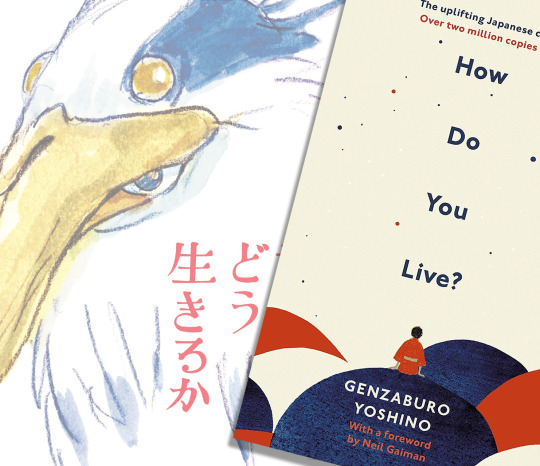
Hayao Miyazaki's favourite childhood book! A story with profoundness that transcends the decades.
Currently crushing the Japanese box office is the latest and potentially final film by Studio Ghibli and Hayao Miyazaki. For a time, before its official English title was known to be "The Boy and the Heron", the film was thought to be an adaptation of this book, a Japanese children's novel, ”How do you live?” (君たちはどう生きるか). As matters have turned out, the film isn't a direct adaptation but there is a connection and it shares its official name in Japanese with the novel. Also, thanks to the enormous attention, the classic book has received an English translation for the first time.
Written by Genzaburo Yoshino and published in 1937, the central character is an intelligent, inquisitive 15 year old boy nicknamed Copper. The story strings together moments typical of life at the time but that also happen to cue some personal development in Copper. This growth might involve his stumbling on a new idea or questioning some status quo or a crisis involving his friends or school. Explicitly aiding and abetting Copper in his maturation is the second major character, his uncle. A mentor and confidante, he tends to expand on or challenge Copper on ethical personal conduct and social responsibility.
With the passage of time, this book also has the intrigue of bringing to life a vanished world and society. Like a time machine, we visit past houses, observe lifestyles, technology, old daily routines and learn how we used to think. In fact, this study occurs twofold. Externally, readers compare Copper's world with 21st century life. At the same time, due to the nature of the book, the in-novel characters are also ruminating about their world, social ills and class strata.
The original Japanese text novel and the manga adaptation are both also available to borrow from our library.
Shelf: 159.7 YOS ENG (@ children’s book section)
How do you live?
by Genzaburō Yoshino ; translated by Bruno Navasky ; with a forward by Neil Gaiman.
First edition.
London : Rider, 2021.
ISBN: 9781846046452 (hardcover)
280 pages ; 22 cm.

#new 2023 09#review 2023 09#review#jcentral#fiction#yoshino genzaburo#coming of age#highschool#morality#ethics#social science#society#history#class struggle#showa era#miyazaki hayao#studio ghibli#how do you live#the boy and the heron#personal development#spiritual growth#self improvement#code of conduct#youth literature#young adult fiction
7 notes
·
View notes
Text
The Easy Life in Kamusari
Book review:
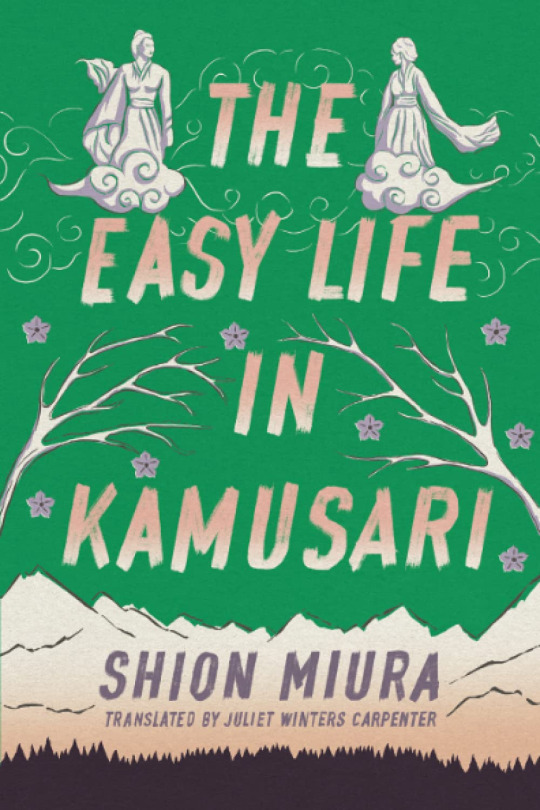
Somewhat predictable but still an immensly charming forestchange bildungsdroman.
Nonplussed by mediocre results, fresh high school graduate and Yokohama city-boy, Yuki Hirano is unperturbed by his lack of career prospects. The same cannot be said for his parents and a teacher who saw this coming a mile off. Somehow, they have conspired to register Yuki into a forestry trainee program in a far-off, barely accessible village. It would be assumed that Yuki might have a dissenting say but a little blackmail and household severance later and he has been packed off on his way. This happens within the first 5 pages.
This short novel is written in first person from the perspective of Yuki. Typing away his boredom into a primitive offline PC, he recounts his adventures after having worked and survived a year in his new home. Besides the exponential learning curve of skilled manual labour, each moment is filled with new experiences from the bucolic, near alien traditions and customs observed by the village to the different aspects of natural scenery that abounds.
Just when the pattern of work and festivals might be starting to wear thin comes the climactic event. Every 48 years the village observes a special ceremony and chooses a 1000 year old tree to fell. Normally a prohibited action but one that the village has been granted dispensation for. Not that cutting the tree down after hiking up a mountainside in the dark and cold is the main difficulty. There is the dubious reassurance that only 8 people have died in the event's recorded history.
This story has been adapted into the magnificently titled WOOD JOB! It featured in the 2014 Japanese Film Festival and the odd special screening at our centre. The original novel differs from the theatrical film but the underlying theme and unique setting make the two versions unmistakably the same story. Besides being packed with scenery candy, the fact the film exists means that the climax does too and the nigh unfilmable ending stunt is given a remarkable realisation. Those who enjoyed The Easy Life in Kamusari but felt it could do with fleshing out are apparently numerous enough as there is now a sequel Kamusari Tales Told at Night still narrated by the fish out of water Yuki.
Shelf: 913.6 MIU
[Kamusari nānā nichijō. English].
The easy life in Kamusari.
Shion Miura ; translated by Juliet Winters Carpenter.
Seattle, Wash. : Amazon Crossing, 2021.
ISBNs: 9781542027151 (hardcover) ; 9781542027168 (paperback)
189 pages ; 21 cm.
(In the forest series)
Originally published in Japan in 2012 as “Kamusari nānā nichijō” by Tokuma Shoten.
Translated into English from the Japanese.
#review#jcentral#fiction#coming of age#bildungsroman#forestry#eco-tourism#folklore#shinto#sustainability#comedy#diary#miura shion#review 2023 10#new 2023 10#light novel
2 notes
·
View notes
Text
Harlock Space Pirate
DVD review

Sleek yet gritty, this is the CGI take on an iconic sci fi franchise. Heavily action oriented, massive fleet battles in the depth of space are as frequent as starship boarding actions and close quarters combat.
A rebellious youth, enmeshed in the closing throes of an interstellar guerrilla war, finds himself aboard the dreaded skull-faced star ship Arcadia. Soon he is sailing the galaxy under the command of the infamous renegade, Captain Harlock. Sleek yet gritty, this is the CGI take on an iconic sci fi franchise. Heavily action oriented, massive fleet battles in the depth of space, boarding actions and close quarters combat are seldom far away.
It should be mentioned that, in this incarnation, Harlock is not the main character. Certainly not by screen time. The protagonist of the story is the new recruit Yama/Logan who has been likened to the character of Tadashi Daiba from the original.
The Captain Harlock property hails from the same fanciful mind and times that gave birth to improbabilities such as steam locomotives running through space and historical battleships resurrected to travel to other planets. Matsumoto Leiji was involved in several sci fi manga touchstones. These of dubious realism, but enduringly evocative, also tended to feature crossovers and cameos from characters of another series. Continuity wise they are all loosely contained in what has been coined the Leijiverse.
Shelf: 778.77 ARA (@ video section)
Harlock : space pirate directed by Shinji Aramaki.
[Australia] : Anchor Bay Entertainment, 2014.
1 DVD : sound, colour ; 12 cm.
Cataloged from the container.
Based on original characters and stories created by Leiji Matsumoto ; screenplay by Harutoshi Fukui, Kiyoto Takeuchi ; animation production Toei Animation ; English screenplay adaption by Steven Foster.
DVD (Region 4, PAL); aspect ratio (2.39:1) letterbox; English soundtrack in Dolby Digital 5.1.
Dubbed in English. No subtitles.
#review#jcentral#anime#scifi#cgi#retro#70s#80s#harlock#herlock#matsumoto leiji#leijiverse#captain harlock#science fiction#throwback#sci-fi#sf
3 notes
·
View notes
Text
Onibi
New item:

Part fantasy, part travelogue--this graphic novels transports readers to the intersection of the natural and supernatural worlds. Onibi: Diary of a Yokai Ghost Hunter follows the adventures of two young foreigners as they travel to a remote and mysterious corner of Japan. Along the way, they purchase an old camera that has the unique ability to capture images of Japan's invisible spirit world. Armed with their magical camera, they explore the countryside and meet people who tell them about the forgotten ghosts, ghouls and demons who lie in wait ready to play tricks on them.
Shelf: 726.100 SEN
Onibi : diary of a yokai ghost hunter.
by Atelier Sentō ; translated from the French by Marie S. Velde.
Tokyo ; Rutland, Vt. ; Tuttle Publishing, 2018.
ISBN: 9784805314968
[128] pages : chiefly colour illustrations, colour maps ; 27 cm.
Translated into English from the French.
2 notes
·
View notes
Text
Yasuke
Book review:
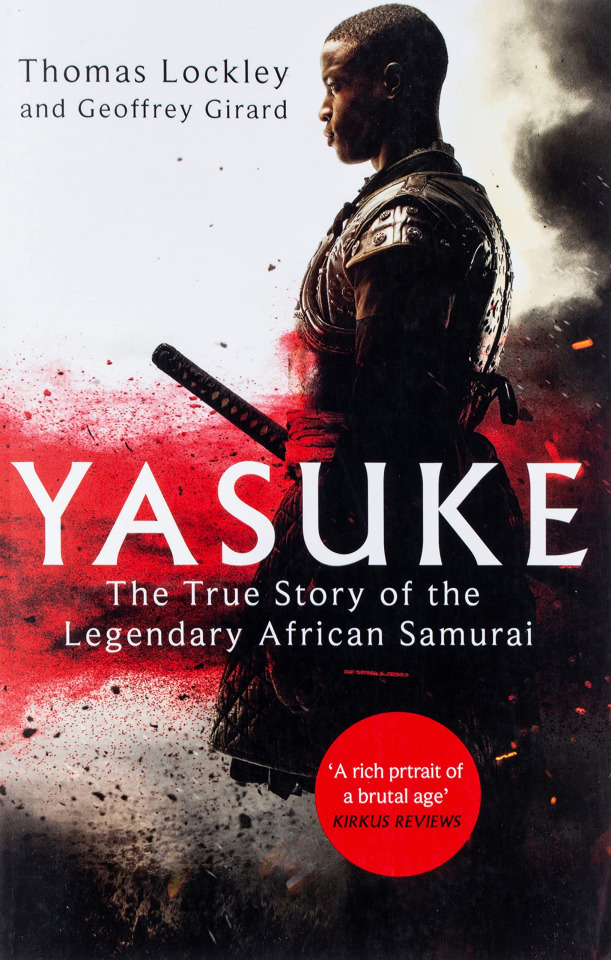
It's 1579 and the end of Japan's warring age appears imminent. Few warlords remain who have not been crushed or enthralled by the might of Oda Nobunaga, the great unifier. Making inroads are firearms, European fashion and Christianity. Into this world steps Yasuke, a towering, dark skinned African bodyguard who ascends to Nobunaga's inner circle. More than a biography, this is a detailed account of martial, upper-echelon, pre Edo Japan.
Taking place amidst some of the most exciting and violent years of Japanese history, this is a riveting textbook camouflaged as a biography. Yasuke was an intriguing oddity. A singular black African soldier, he arrived at a time when Europeans were rare and himself nearly unique. He rises to become a confidant of the most powerful warlord the country had seen and officially gains elevation to samurai, complete with stipend and household. He's also a linguistic genius going from fresh off the boat, barely heard of Japan, and within a year he is conversing with the defacto head of state, not only without embarrassing himself but well enough that Nobunaga would specifically sought him out for discourse.
Yasuke's story is the backbone to two other major elements that contribute to the bulk of the 400 pages of content. Digressions are frequent and sometimes expansive. These cover relevant character backstories, the state of the world, the Jesuit order, scientific advances, ocean travel, regional history, local history, cultural notes and other circumstantial information. The other major element is Oda Nobunaga. His looming presence and monumental impact mean that Yasuke is sometimes an excuse for a massive infodumping of Nobunaga's manoeuvrings, political intrigues, regional factions, personal histories and warfare. This last point is not to be taken lightly. Another review goes as far as saying that "blood and gore ooze from the pages". Perhaps an exaggeration but it does viscerally convey the martial activity prevalent to Yasuke's world.
Yasuke is the work of Thomas Lockley of Nihon University College of Law, Tokyo, in collaboration with Geoffrey Girard. Described by some sources as a debut novel, it certainly feels as if great care and attention have been lavished into its details. It was first published in 2019 as African Samurai. Arguably a much better and very literal title but perhaps confusable with the separate cult fiction property, Afro Samurai. The latter being an action slasher in a generic Edo-ish setting with light cyber and supernatural genre blending. More recently, an older, fictionalised Yasuke stars in a Netflix OVA adaptation, again featuring an altered history and very anachronistic Edo.
Shelf: 210.48 YAS
Yasuke : the true story of the legendary African samurai.
by Thomas Lockley and Geoffrey Girard.
Paperback edition.
London : Sphere, 2020.
ISBN: 9780751571592 (paperback)
472 pages : illustrations, map ; 20 cm.
First published in Canada?, 2019 as African Samurai by Hanover Square Press.
Includes bibliographical references and index (pages [457]-472).
#review#jcentral#non-fiction#history#biography#sengoku jidai#sengoku period#oda nobunaga#warring states#samurai#warfare#religion#christianity#jesuits#review 2023 04#new 2023 04
2 notes
·
View notes
Text
Fushigi na e
New item:

Shelf: 141.21 ANN (@ tadoku section)
Fushigi na e.
illustrations by Anno Mitsumasa.
Tōkyō : Fukuinkan Shoten, 1971.
ISBN: 9784834002584
27 pages : all colour illustrations ; 27 cm.
(Anno Mitsumasa no ehon).
Previously published as content of a mounthly magazine "Kodomo no tomo" in 1968.
Illustrations only. No text except for cover, title page and colophon in Japanese.

This book is suitable for tadoku, extensive reading for learners of Japanese-language. Please find details about tadoku and our reading night event on our tadoku web page.
5 notes
·
View notes
Text
People from my neighbourhood
New item:

"Take a story and shrink it. Make it tiny, so small it can fit in the palm of your hand. Carry the story with you everywhere, let it sit with you while you eat, let it watch you while you sleep. Keep it safe, you never know when you might need it. In Kawakami's super short 'palm of the hand' stories the world is never quite as it should be: a small child lives under a sheet near his neighbour's house for thirty years; an apartment block leaves its visitors with strange afflictions, from fast-growing beards to an ability to channel the voices of the dead; an old man has two shadows, one docile, the other rebellious; two girls named Yoko are locked in a bitter rivalry to the death. Small but great, you'll find great delight spending time with the people in this neighbourhood."--Provided by publisher.
Shelf: 913.6 KAW
People from my neighbourhood.
by Hiromi Kawakami ; translated from the Japanese by Ted Goossen.
London : Granta Books, 2021.
ISBN: 9781846276996 (paperback)
121 pages ; 18 cm.
Previously published: 2020.
Stories originally published in the Japanese literary magazine Monkey or its predecessor, Monkey Business.
2 notes
·
View notes
Text
Japanese art in perspective
New item:
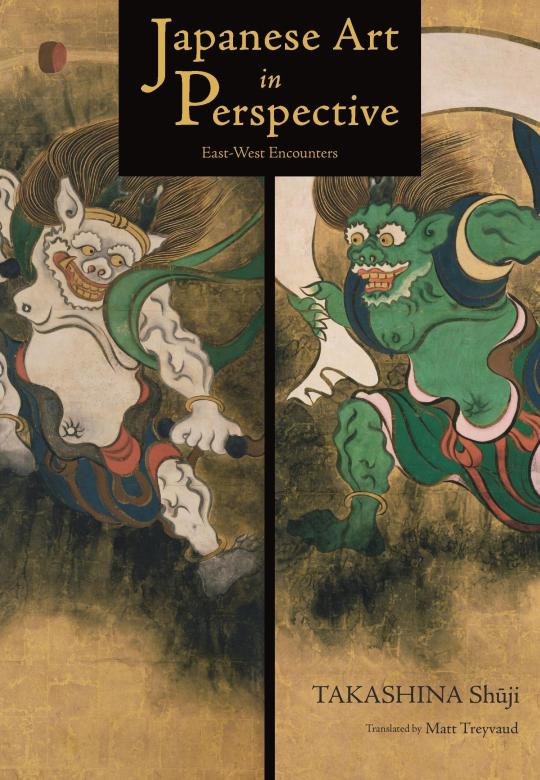
"How do Japanese and Western aesthetics differ? In this comparative cultural study, TAKASHINA Shūji, a leading scholar of Western art history and insightful commentator on Japanese art, compares the two artistic traditions to reveal the distinctive characteristics of the Japanese sense of beauty.”-- Back cover.
Shelf: 721.02 TAK ENG
Japanese art in perspective : east-west encounters.
by Takashina Shūji ; translated by Matt Treyvaud.
1st English edition.
Tokyo : Japan Publishing Industry Foundation for Culture (JPIC), 2021.
ISBN: 9784866581804 (hardcover)
viii, 191 pages : illustrations ; 22 cm.
Japan library (Shuppan Bunka Sangyō Shinkō Zaidan).
This book is a translation of Zoho Nihon bijutsu o miru me : higashi to nishi no deai, which was published by Iwanami Shoten ...-- T.p. verso.
Includes bibliographical references.
Part I: Methods of Japanese art.
The character of Japanese aesthetics
Object and form.
Forms of seeing, east and west
The "trailing bough" motif
The art of the journey
The principle of ornamentation
Part II: East-West Encounters.
East and west in Meiji painting
The avant-garde in Japanese art
Japanese Academism
Some problems of Japonisme
Part III: Passing beauty, returning memory.
The aesthetics of transition : the four seasons and the Japanese sense of beauty
The color of the flowers : symphonies of image and word
The heritage of memory : intangible culture as Japanese tradition.
#comparative arts#japanese art to 1868#japanese painting#european influences#meiji period#new 2022 10#jcentral#jstudies
3 notes
·
View notes
Text
The man without talent
New item:

"Yoshiharu Tsuge is one of the most celebrated and influential comics artists, but his work has been almost entirely unavailable to English-speaking audiences. The Man Without Talent, his first book to be translated into English, is an unforgiving self-portrait of frustration. Swearing off cartooning as a profession, Tsuge takes on a series of unconventional jobs--used-camera salesman, ferryman, stone collector--hoping to find success among the hucksters, speculators, and deadbeats he does business with. Instead, he fails again and again, unable to provide for his family, earning only their contempt and his own. The result is a dryly funny look at the pitfalls of the creative life, and an off-kilter portrait of modern Japan. Accompanied by an essay from the translator Ryan Holmberg which discusses Tsuge's importance in comics and Japanese literature, The Man Without Talent is one of the great works of comics literature."--Publisher’s description.
Shelf: 726.1 TSU
[Munō no hito. English].
The man without talent.
by Yoshiharu Tsuge ; translated with an essay by Ryan Holmberg.
New York, N.Y. : New York Review Books, [2019].
ISBN: 9781681374437
xxi, 216 pages : chiefly illustrations ; 22 cm.
For The Man Without Talent, in keeping with the original Japanese orientation, begin at the other side of this book and read from right to left.
Includes bibliographical references in endnotes (pages xx-xxi).
Translated into English from the Japanese.
2 notes
·
View notes
Text
I want to eat your pancreas
New item:
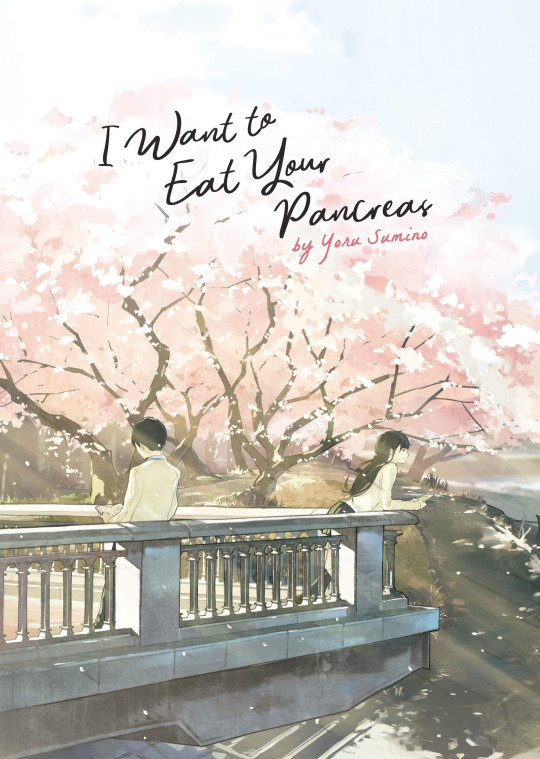
A high school boy finds the diary of his classmate - only to discover that she's dying. Yamauchi Sakura has been silently suffering from a pancreatic disease, and now exactly one person outside her family knows. He swears to her that he won't tell anyone what he learned, and the shared secret brings them closer together in this deeply moving, first-person story that traces their developing relationship in Sakura's final months of life.
Shelf: 913.6 SUM
I want to eat your pancreas.
by Yoru Sumino ; translation by Nathan Collins.
Los Angeles, Calif. : Seven Seas Entertainment, 2018.
ISBN: 9781642750331 (paperback)
286 pages ; 22 cm.
Translated into English from the Japanese.
. "Pancreas - Diseases - Patients - Fiction
Japanese fiction - Heisei period, 1989-2019 - Translations into English
Light novels - Translations into English
High school students - Japan - Fiction
Terminally ill - Fiction" 29 Mar 2022
#fiction#light novels#pancreas diseases#patients#high school students#terminally ill#english translation#new 2022 06#jcentral#sumino yoru#light novel
3 notes
·
View notes
Text
The memory police
New item:

Read our book review here.
Shelf: 913.6 OGA
The memory police.
by Yoko Ogawa ; translated from the Japanese by Stephen Snyder.
London : Vintage, 2020.
ISBN: 9781784700447 (paperback)
274 pages ; 20 cm.
First published in hardcover by Harvill Secker in 2019.
Translated into English from the Japanese.
#fiction#english translation#islands#memory#identity#state crimes#women novelists#science fiction#jcentral
1 note
·
View note
Text
Kyoto stories
New item:

Don Ascher is a young American living in Kyoto in the 1970s. He is a student of Japanese. He also teaches English, works at a shabu-shabu restaurant, and hangs out in the company of gangsters, hostesses, housewives, tea teachers, and fellow foreigners. Set amidst the timeless beauty of the ancient capital and its garish modern entertainments, this collection of fanciful episodes from Don's life is a window into Japanese culture and a chronicle of romance and human connections.
Shelf: 933.7 ALP
Kyoto stories.
by Steve Alpert.
Berkeley, Calif. : Stone Bridge Press, 2022.
ISBN: 9781611720747
295 pages : map ; 21 cm.
0 notes
Text
The flowers of buffoonery
New item:

"The Flowers of Buffoonery opens in a seaside sanitarium where Yozo Oba-the narrator of No Longer Human at a younger age-is being kept after a failed suicide attempt. While he is convalescing, his friends and family visit him, and other patients and nurses drift in and out of his room. Against this dispiriting backdrop, everyone tries to maintain a lighthearted, even clownish atmosphere: playing cards, smoking cigarettes, vying for attention, cracking jokes, and trying to make each other laugh. While No Longer Human delves into the darkest corners of human consciousness, The Flowers of Buffoonery pokes fun at these same emotions: the follies and hardships of youth, of love, and of self-hatred and depression. A glimpse into the lives of a group of outsiders in prewar Japan, The Flowers of Buffoonery is a darkly humorous and fresh addition to Osamu Dazai's masterful and intoxicating oeuvre"-- Provided by publisher.
Shelf: 913.6 DAZ
The flowers of buffoonery.
by Osamu Dazai ; translated by Sam Bett.
New York : New Directions Books, 2023.
ISBN: 9780811234542 (paperback)
96 pages ; 21 cm.
(A New Directions paperbook)
1 note
·
View note
Text
Yamaguchi Akira daigamen sakuhinshū

New item:
"A collection of exquisitely realized paintings, including examples of mixed-period 'rakuchū rakugai-zu' paintings of city scenes, and new works of 'fusuma' sliding door painting for Byōdōin Temple, 'musha-e' samurai fight scenes and various sketches. Long awaited, this is the first collection of Yamaguchi's work in eight years. While focusing on the true painterly expressiveness that is Yamaguchi's forte, this groundbreaking new collection also presents his tearoom-parody objets d'art, and his self-produced exhibitions that act as warning signals to the world of contemporary art, thereby providing an excellent overview of the multi-layered thought of Akira Yamaguchi.
Shelf: 723.1 YAM
Yamaguchi Akira daigamen sakuhinshū = The big picture.
by Yamaguchi Akira ; edited Kamada Eriko.
Tōkyō : Seigensha, 2012.
ISBN: 9784861523670
209, 27 pages : chiefly illustrations (chiefly colour) ; 30 cm.
Text in Japanese and English.
Table of contents:
"Nōgaki, chotto bijutsuppoi koto = Self-promotion, something little bit artsy.
Oekaki shōnen, bijutsu, āto ; Oekaki chūnen, kakumekasu (mekasu…?) = Boy sketcher, bijutsu, art ; Middle-aged painter, stylizing this way.
Bijutsu to kōgaku to yūkoku to : Yamaguchi Akira no geijutsu to sono rinen o megutte = Art and engineering and patriotism : on Yamaguchi Akira's art and its idea / Sawaragi Noi.
Kako o kaitaishite gendai e : Yamaguchi Akira no kakū no Nihon = The imaginary Japan of Yamaguchi Alkira / John T. Carpenter.
Ryakureki = Biography.
Bunken mokuroku = Bibliography.
Keisai sakuhin mokuroku = List of works.
1 note
·
View note